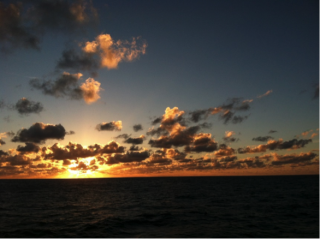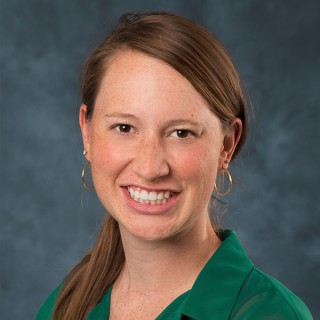
As we near the end of our journey to Tamu Massif, the “World’s Largest Single Volcano,” I thought I’d share the learning opportunities I’ve had aboard the R/V Falkor. At home, I have a quote on my desk that reads “Bite off more than you can chew, then chew it.” This epitomizes my experience as a Schmidt Ocean Institute (SOI) student opportunity recipient. Before boarding the Falkor, my knowledge and understanding of geophysics, volcanoes, and how a scientific vessel worked was very limited, but the SOI program offered me the chance to gain knowledge through a hands-on, field experience of a lifetime.
Acclimating to Life at Sea


The first couple of days took some adjusting as I figured out a routine and my purpose on the R/V Falkor. Ship life is very different from my on-shore life, but the good thing about being on a ship is that making friends can be easy since we live, work, eat and have fun together. My schedule is now set and consists of two shifts as a watchstander from 3-6 AM and 3-6 PM: I am stationed in the control room, keeping a log of specific information in case something goes wrong or the equipment stops working during the surveys. I am also able to see the data streaming in live as we map Tamu Massif and gather information on magnetic anomalies. Eating, homework, naps/sleep, plus some down time with the science team and the crew when time allows is also part of my routine. After almost four weeks of surveying Tamu Massif, including detours and course changes to avoid bad weather, I’ve learned much about navigating the seas. Additionally, learning how technology and equipment on the Falkor function in order to collect good data has been a huge experience. A highlight of this trip for me has been learning how to use the tools needed to address the most fascinating questions in oceanography – in this case the big question is: how did Tamu Massif form?
Learning the Science

As part of the program, students are expected to learn and understand the research being conducted. I am naturally inquisitive, so I find it easy to ask lots of questions to the crew and the science team. The Falkor’s Lead Marine Technician, Leighton Rolley, has been a great mentor in helping me see and participate in different parts of ship life – from ship maintenance, to learning how to use the science equipment on board such as the Expendable Bathythermograph (XBT) that measures salinity and temperature. These parameters affect the speed of sound through water, and in turn, can affect the bathymetric/depth data readings we are trying to collect. Leighton is also testing my computing skills, very necessary in this field, through “homework” assignments that include determining across-track and along-track widths and resolutions of the multi-beam echo sounder data in relation to factors such as water depth and ship speed. One of the best opportunities is being able to network with scientists and other university students onboard. My knowledge of volcanos, geophysics, and data collection has increased dramatically since I’m able to learn directly from the experts in the field like Chief Scientist Dr. William Sager from the University of Houston and Co-chief Scientist Dr. Jinchang Zhang “Dr. Sam” from the South China Sea Institute of Oceanography who are the experts on Shatsky Rise and Tamu Massif.
Inspired to Keep Exploring

The next best experience on this expedition is seeing so many different things. Besides the science, I have seen bioluminescent jellyfish for the first time, flying fish, and some fantastic sunsets and sunrises in the middle of the Pacific Ocean – these make you realize just how enormous our world is and how small we are. There are so many more places to see, people to meet, and things to learn. This expedition has inspired me to continue exploring the world around me, especially the oceans. I highly encourage anyone interested in learning more than you ever thought you could learn in month to apply for the student opportunity. It is literally an experience of a lifetime, and it will push you beyond your comfort zone. As Captain Bernd says, “Learn to be comfortable with being uncomfortable.”
I am very thankful to have been offered this opportunity that allows me to see and study a corner of the world in a way that I otherwise never would have.

